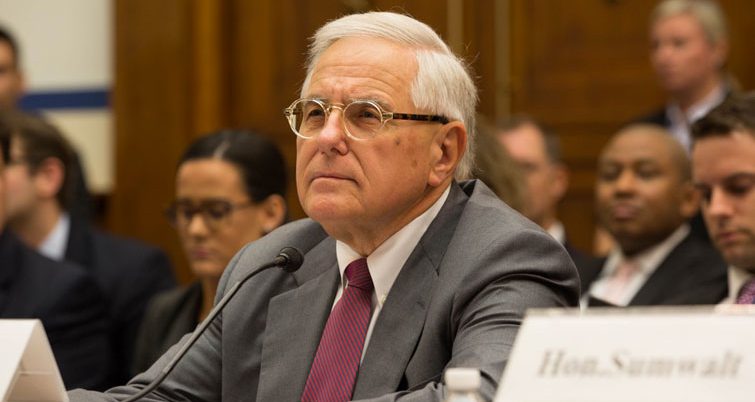House PTC hearing: Progress; challenges on display
Written by Mischa Wanek-Libman, editor
The Subcommittee on Railroads, Pipelines and Hazardous Materials for the U.S. House Transportation and Infrastructure Committee held its second hearing of the year to focus on implementation of Positive Train Control (PTC) on Sept. 13.
Seven rail industry stakeholders testified before the subcommittee including The Honorable Ronald L. Batory, administrator, Federal Railroad Administration (FRA)
- The Honorable Robert Sumwalt, chairman, National Transportation Safety Board
- Ms. Susan A. Fleming, director, Physical Infrastructure Team, Government Accountability Office (GAO)
- Mr. Scot Naparstek, executive vice president and COO, Amtrak
- The Honorable Edward Hamberger, president and CEO, Association of American Railroads (AAR)
- Mr. Jeffrey D. Knueppel, P.E., general manager, Southeastern Pennsylvania Transportation Authority; on behalf of American Public Transportation Association (APTA)
- Ms. Stacey Mortensen, executive director, Altamont Corridor Express
In an opening statement, Rep. Jeff Denham (R-CA-10), who chairs the subcommittee, said, “We’ve seen a great deal of progress, from freight rails as well as commuter rails across the entire country. But we’ve still seen challenges. We’ve still seen accidents. We’ve had promises made to us as a committee that haven’t been met… We asked the entire industry, if there’s something you need, let us know… The patience has grown thin.”
What the FRA said
Administrator Batory’s written testimony included possible civil penalties FRA is authorized to assess toward those railroads that fail to meet the statutory deadline. While civil penalty schedule recommends a $16,000 penalty for failure to complete PTC implementation on a required track segment, FRA’s current minimum civil penalty is $853 and the ordinary statutory maximum is $27,904. FRA may assess a civil penalty for each day the non-compliance continues, FRA could also opt for a one-time, monthly, quarterly, annual or other time frame. Administrator Batory said the end goal of any enforcement action is to compel a railroad to complete PTC implementation as efficiently and safely as possible.
What NTSB said
The hearing took place a day after the 10th anniversary of the Chatsworth, Calif., Metrolink/Union Pacific accident, which killed 25 people and injured 102 others. The accident propelled Congress to pass the Rail Safety Improvement Act of 2008, which included the mandate for PTC implementation. Chairman Sumwalt said NTSB urges swift implementation, but noted that only about 40 percent of the nation’s rail network will operate under PTC, which he says leaves a significantly decreased level of safety along non-PTC track miles.
What GAO said
GAO found that 32 of 40 railroads reported that they, or the railroad which owns the track on which they operate, will apply for an extension. Sixteen commuter and smaller freight railroads reported planning to apply for an extension using substitute criteria, and of these, 12 intend to apply for substitute criteria based on early testing such as field testing. Though substitute criteria are authorized in law, GAO said this approach defers time-intensive RSD testing into 2019 and beyond. In March 2018, GAO recommended FRA take steps to systematically communicate extension information to railroads and to use a risk-based approach to prioritize agency resources and workload. GAO noted that FRA has taken some steps recommended in March 2018 to address communicating and clarifying extension information, as well as using a risk-based approach to prioritize agency resources and workload.
What Amtrak said
The biggest take-away from the hearing was Naparstek’s announcement that Amtrak will file for a 2020 alternative schedule based on “the difficulty of competing testing with so many freight and commuter partners.” Naparstek said 222 of Amtrak’s 315 daily trains currently operate with PTC protection along some of all of their routes.
What AAR said
Hamberger said freight railroads are addressing interoperability with each other, as well as with their tenant railroads. He called interoperability “the biggest remaining challenge of PTC implementation,” but also noted that by the end of 2018, PTC will be fully operational along 80 percent of required freight miles.
What APTA said
Knueppel explained that despite the technical challenges, the commuter rail industry continues to make significant progress implementing PTC. He also explained the pressure placed on commuter agencies funding when implementing this technology, especially considering the immense backlog many agencies have in state-of-good-repair work. He requested Congress provide additional funding “to enable publicly-funded commuter railroads to quickly implement, operate, and maintain PTC, as well as address the massive backlog of other deferred critical infrastructure and safety projects.”
What ACE said
Mortensen provided several concrete examples of what smaller stakeholders are faced with regarding a tight vendor market. She said PTC equipment was ordered in March 2017, but delivery did not occur until April 2018 due to amount of orders the vendor had. Additionally, the vendor could not establish a site workforce until late June.
Rep. Denham ended the hearing with a simple, but direct, “PTC, get it done.”





